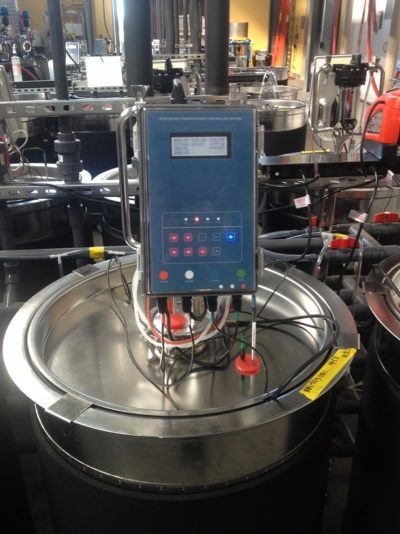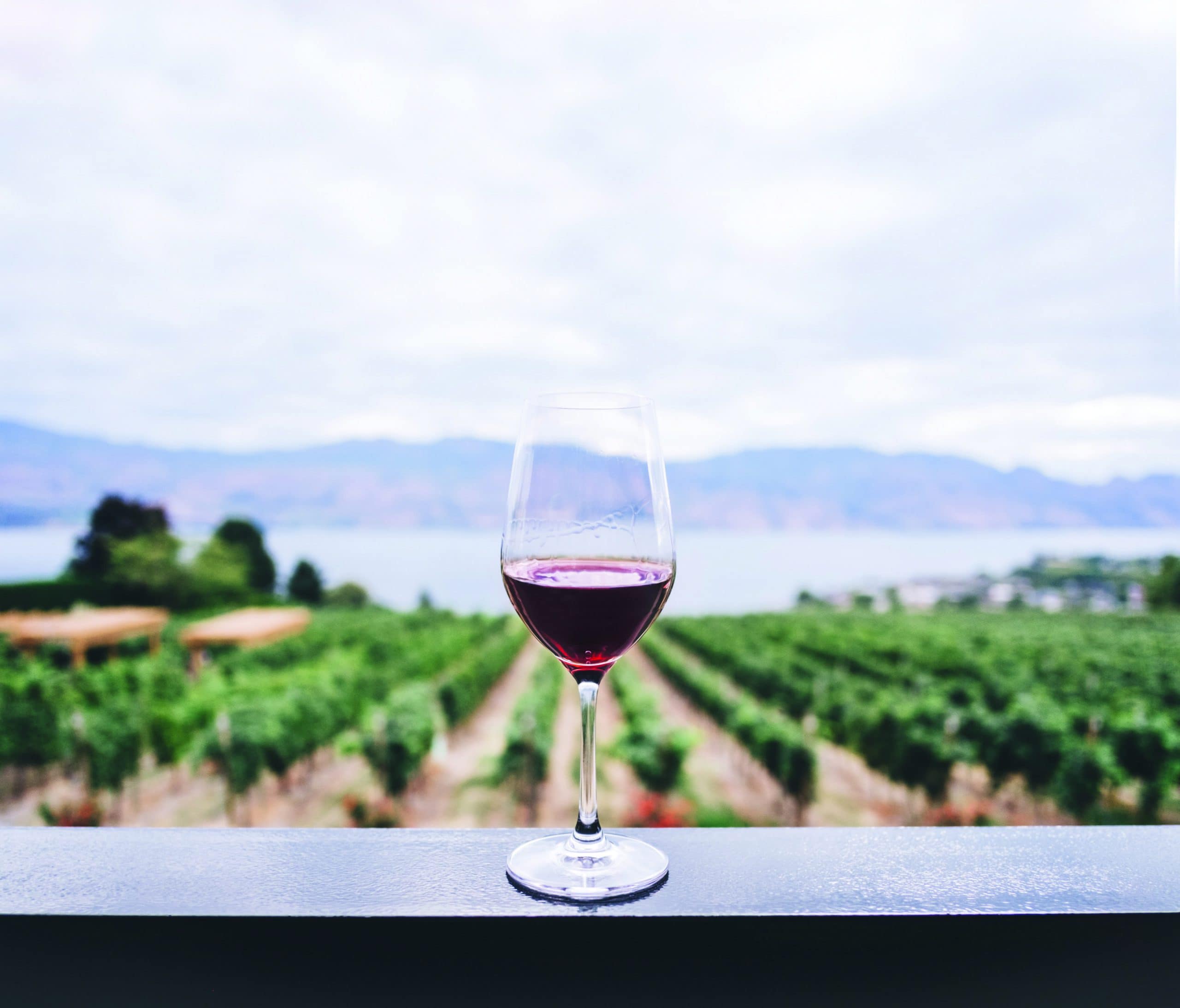UC Davis collaboration to determine factors that affect colour in Pinot Noir wines
Grose C, Sherman E, Oberholster A, Yu-Te Tseng, Stuart L, Yang L, McLachlan A, Yvon M, Gunson A
The issues
Pinot noir wine colour development is a concern for the New Zealand industry. Highly coloured wines are generally produced from riper grapes (24–26 °Brix), with typically higher alcohol content (>14% v/v). Our previous work determined that anthocyanin concentrations peak several weeks before optimal harvest Brix values, indicating that anthocyanins are not limiting good colour development in wines made from less-ripe grapes.
Additionally, winemakers are concerned about perceived ‘unripe’/‘green’ tannins in New Zealand Pinot noir. Their (untested) hypothesis is that highly coloured wines, especially those with large amounts of anthocyanin-tannin polymers, are perceived to be less green.
Some scientific background
Monomeric anthocyanins are primarily responsible for the red colour of grapes and young wines, but development of pigmented polymers is critical for the stable red colour as wines age. Studies have shown differences in grape tannin content and composition based on maturity, including different ratios of skin to seed tannins. Concentrations of monomeric anthocyanins decrease while polymeric pigments (anthocyanin-tannin polymers) increase as wines age. The development of stable polymeric pigments has been linked to the amount and source of tannins: seed-derived tannins enhanced pigment formation, but excessive amounts were detrimental. Pre-ferment tannin composition, more so than grape anthocyanin content, may be key for Pinot noir wine colour development.
Grape harvest maturity not only affects phenolic composition of ferments and resulting wines; ripeness is important for sensory properties like flavour and mouthfeel too. Industry experience suggests you cannot make a high quality New Zealand Pinot noir from 20 °Brix fruit simply by adding sugar to raise it to 24-26 °Brix. New Zealand may be quite different from other countries: the benefits of less acidity and green characters that come with longer hang time in New Zealand are possibly greater than those in warmer climate regions like California that easily and quickly achieve fruit with very high Brix values. While the impacts of tannin molecular structure and concentration have been previously linked to astringency generally, researchers face significant difficulties in linking specific astringent sensations to wine polyphenol composition.
Even in California, harvest maturity depends on the weather and other factors (e.g. labour), and grape maturity can significantly influence wine composition and thus wine style. Higher maturity is linked to more complex aroma profiles, as well as changes in tannins extracted. It will be of tremendous value to understand the impact of grape maturity on the link between grape and wine composition. Additionally, linking wine composition and sensory attributes can aid in identifying markers for specific wine styles.
The approach
Using grapes from Marlborough and from California, and applying must manipulations at different harvest times, this collaborative study with UC Davis investigated the respective roles of juice and pomace on the chemistry and sensory properties of wines, especially their influence on colour and perception of ‘green tannins’ as grape ripening advances.

The international collaboration with Anita Oberholster, Extension Specialist in Enology from University of California, Davis (UC Davis) will help to generate new knowledge about colour development in Pinot Noir wine
Juice and pomace were separated. The pressed juice was reunited with the pomace to produce the control wines. To produce the manipulated wines, the juice was substituted with a common single juice from an earlier harvest. To determine the relative contributions of juice and pomace to wine composition and the development of colour more fully, treatments also included fermenting pomace with a synthetic juice solution, and fermenting the juices without pomace.
Key results – New Zealand wines
The hypothesis – that less mature fruit produce less coloured wines – was disproved for New Zealand 2018 vintage conditions. Fruit anthocyanins were similar across all harvest dates, and in the resulting wines. The lightest colour wines were actually produced from more mature grapes. Under more favourable vintage conditions these results might have differed: the Marlborough 2018 vintage was challenged by weather events and disease pressures, resulting in lower than planned fruit soluble solids contents at each harvest. This probably played a role in the small differences in must and wine composition observed. Botrytis bunch rot pressure at final harvest was very high across Marlborough, which may have affected wine colour development.
For New Zealand wines, total phenolics, both monomeric and polymeric, were more influenced by juice composition (other than sugars) than by pomace composition. Wine anthocyanin content, on the other hand, was most related to wine alcohol concentration, and therefore pre-ferment sugar content, with pomace a secondary influence.
Wine colour was influenced by time of harvest and by must manipulations, and was detectable by our sensory panel, with the effect of low-maturity juice most pronounced for less mature pomace. Colour extraction when the skins and juice were less mature was not as great as when the juice was the same maturity as the pomace, showing that the juice contribution to wine colour development is important. The difference in wine hue between the control and manipulated wines at each harvest became smaller with increasing maturity, because of an increase in orange and yellow pigments in the control wines at each harvest.
We measured 44 pre-ferment must parameters and 22 finished wine chemical parameters. Multivariate analysis found no significant relationships between pre-ferment must composition and finished wine composition and colour. The ratio of concentrations of polymeric phenols to total monomeric anthocyanins seemed to correlate with the wine colour measurements; however, this hypothesis will require further assessment.
Key results – Californian wines
The more mature grapes produced the most highly coloured wines. Similar to New Zealand, harvest dates did not influence anthocyanin concentrations, but did affect total phenolics and tannins, which could have influenced pigment stabilisation. Anthocyanins were most influenced by pre-ferment sugar concentrations and therefore wine alcohol content, just as in New Zealand; however, at very high alcohol concentrations (>14% v/v) there was no increase in wine anthocyanin concentration with increasing alcohol. In contrast to the New Zealand wines, the treatments did not show that monomeric polyphenols were influenced by juice composition, but polymeric phenols were.
The Californian 2018 vintage was also challenging because of extreme heat waves, and resulting very fast increases in grape soluble solids contents. Harvest targets were missed, and differences between harvest dates were smaller than might have been expected with longer maturation phases. Notwithstanding, fruit with higher soluble solids content did result in wines with more colour, owing to higher extractability or solubility of some phenolics and tannins during fermentation. Differences perceived by the sensory panel between wines from different must manipulations were smaller than expected. This may have been partly due to the close harvest dates resulting in minimal changes in skins, seeds, and grape cell wall compositions, and thus primary metabolites making a larger contribution to perceived differences among the wines from the different treatments.

The Californian wines were made in automated ferment vessels at the teaching and research winery at University of California, Davis (UC Davis)
Where to from here?
The experiments across two vintages (New Zealand and California) provide some insights into the relative influence of Pinot noir grape maturity on wine chemistry and sensory properties. However, owing to the significant impact of seasonal/environmental conditions in 2018, further targeted research is required to understand the specific roles of grape skin, seed and juice metabolites in determining final wine composition and in particular wine colour intensity.
This article first appeared in the February/March 2020 issue of the New Zealand Winegrower Magazine.

















